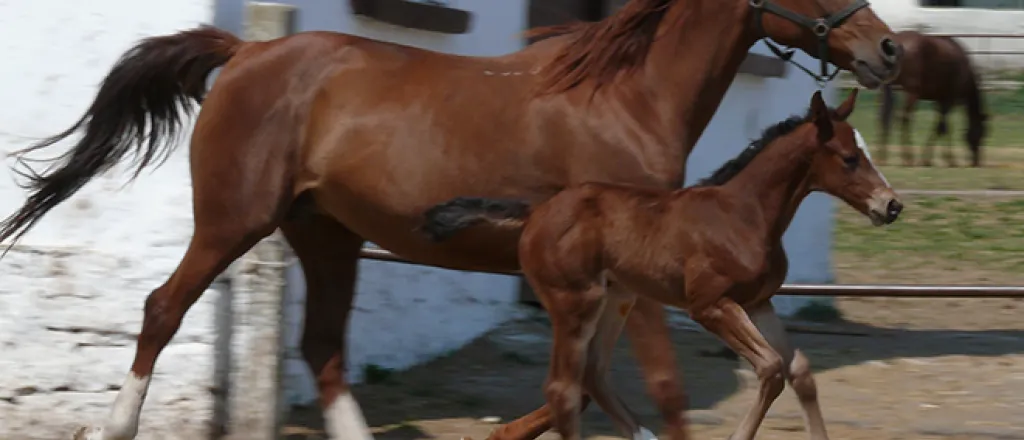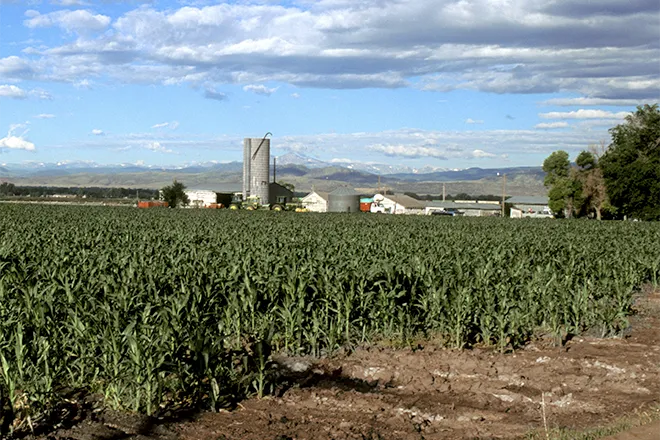
Ag Department Tracking Three Horse Health Issues
Public domain - Wikimedia
The Colorado Department of Agriculture (CDA) is tracking three separate health issues impacting horses in the state. There are confirmed cases of Equine Infectious Anemia (EIA), Equine Herpesvirus Myeloencephalitis, and Strangles.
“The Colorado Department of Agriculture is working with the equine industry and veterinarians to contain the spread of these diseases. An important reminder is that owners should always practice proper disease prevention practices for their horses. Proper sanitation and biosecurity is often the first step in protecting your horse,” said State Veterinarian, Dr. Keith Roehr.
Equine Infectious Anemia (EIA)
May 4, 2017, the State Veterinarian’s Office was notified by the US Department of Agriculture’s National Veterinary Services Laboratory that a horse in Weld County had tested positive for Equine Infectious Anemia (EIA). There are now two additional cases of EIA at the same location, and the horses belong to the same owner. All three horses have been euthanized. The Weld County facility is under a quarantine order that restricts movement of horses until further testing is completed by CDA.
EIA is a viral disease spread by bloodsucking insects, inappropriate use of needles, or other equipment used between susceptible equine animals such as horses, mules and donkeys. Infected horses may not appear to have any clinical signs of the disease, although it can cause high fever, weakness, weight loss, an enlarged spleen, anemia, weak pulse and even death. There is no cure for the disease, so infected animals must be quarantined for life or euthanized. EIA is not transmissible to people.
EIA testing must be conducted annually before horses can be transported across state lines. The test for EIA is commonly called a Coggins Test.
Equine Herpesvirus Myeloencephalitis
CDA is investigating a confirmed case of Equine Herpesvirus Myeloencephalitis - a form of Equine Herpes Virus (EHV-1), within the state. A Mesa County premises has been placed under quarantine.
The horse is quarantined after showing signs associated with the disease and then testing positive for EHV-1. The horse is under private veterinary care and reported to be making a good recovery. The horse had been to events over the previous two weeks, and the event organizers have been notified. Event organizers are advising participants to monitor their horses for signs of the disease, especially for fever over 101.5 degrees.
EHV-1 is not transmissible to people; it can be a serious disease of horses that can cause respiratory, neurologic disease and death. The most common way for EHV-1 to spread is by direct horse-to-horse contact. The virus can also spread through the air, and indirectly through contaminated equipment, clothing and hands. Proper biosecurity practices are vital to preventing the spread of this virus.
Symptoms include fever, decreased coordination, nasal discharge, urine dribbling, loss of tail tone, hind limb weakness, leaning against a wall or fence to maintain balance, lethargy, and the inability to rise. While there is no cure, the clinical signs of the disease may be treatable.
Strangles
The State Veterinarian’s office has received numerous calls with questions about equine strangles recently. In Colorado, equine strangles is not a reportable disease. The State Veterinarian’s Office does not issue quarantines for affected facilities or horses. While it is recommended for an infected barn to limit movement, restrictions with equine strangles are managed by the barn and the attending veterinarian.
Strangles is a contagious disease of horses of all ages but it is more commonly seen in young horses, usually less than two years of age. Foals are usually not susceptible until the antibodies that they receive from the mare decline - usually around four months of age but can vary. Typically, once a horse has gone through the infection, they become immune to developing clinical signs again or the disease is not as severe the next time it develops in their system.
Using common sources of water, feed bunks, and housing will allow transmission of the bacteria from horse to horse. Horses that are spread out in pastures or large exercise areas in which they can move and graze will not share the infection as easily.















